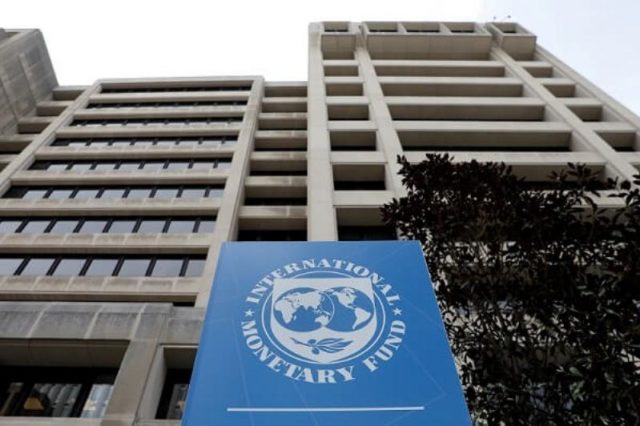TUE, 11 OCT, 2022-theGBJournal| The International Monetary Fund (IMF) forecasts global growth to slow from 6.0% in 2021 to 3.2% in 2022 and 2.7% in 2023, ‘’the weakest growth since 2001, except for the global financial crisis and the acute phase of the pandemic.’’
At the same time, the Fund is forecasting Nigeria’s growth to slow from 3.6% in 2021 to 3.2% in 2022 and further down to 3.0% in 2023.
The Fund, in its World Economic Outlook published today, also projects that more than a third of the global economy will contract this year or next, while the three largest economies—the United States, the European Union, and China—will continue to stall.
‘’In short, the worst is yet to come, and for many people 2023 will feel like a recession.’’
In the report, the IMF noted that the global economy is experiencing a number of turbulent challenges.
‘’Inflation higher than seen in several decades, tightening financial conditions in most regions, Russia’s invasion of Ukraine, and the lingering COVID-19 pandemic all weigh heavily on the outlook. Normalization of monetary and fiscal policies that delivered unprecedented support during the pandemic is cooling demand as policymakers aim to lower inflation back to target,’’ the IMF said.
‘’But a growing share of economies are in a growth slowdown or outright contraction. The global economy’s future health rests critically on the successful calibration of monetary policy, the course of the war in Ukraine, and the possibility of further pandemic-related supply-side disruptions, for example, in China.’’
The IMF also highlighted Risks to the outlook which it says remain unusually large and to the downside.
It said; Monetary policy could miscalculate the right stance to reduce inflation. Policy paths in the largest economies could continue to diverge, leading to further US dollar appreciation and cross-border tensions. More energy and food price shocks might cause inflation to persist for longer. Global tightening in financing conditions could trigger widespread emerging market debt distress. Halting gas supplies by Russia could depress output in Europe. A resurgence of COVID-19 or new global health scares might further stunt growth. A worsening of China’s property sector crisis could spill over to the domestic banking sector and weigh heavily on the country’s growth, with negative cross-border effects. And geopolitical fragmentation could impede trade and capital flows, further hindering climate policy cooperation.
The balance of risks is tilted firmly to the downside, with about a 25 percent chance of one-year-ahead global growth falling below 2.0 percent—in the 10th percentile of global growth outturns since 1970.
In sub-Saharan Africa, the IMF says the growth outlook is slightly weaker than predicted in July, with a decline from 4.7 percent in 2021 to 3.6 percent and 3.7 percent in 2022 and 2023, respectively— downward revisions of 0.2 percentage point and 0.3 percentage point, respectively.
‘’This weaker outlook reflects lower trading partner growth, tighter financial and monetary conditions, and a negative shift in the commodity terms of trade.’’
The forecast for global headline consumer price index inflation is for a rise from 4.7 percent in 2021 to 8.8 percent in 2022—an upward revision of 0.5 percentage point since July—and a decline to 6.5 percent in 2023 and 4.1 percent in 2024.
Forecasts for most economies have been revised up modestly since July but are significantly above forecasts made earlier in 2022. On a four-quarter basis, projected global headline inflation peaks at 9.5 percent in the third quarter of 2022 before declining to 4.7 percent by the fourth quarter of 2023.
For emerging market and developing economies, inflation is expected to rise from 5.9 percent in 2021 to 9.9 percent in 2022, before declining to 8.1 percent in 2023. Prices in the fourth quarter of 2023 are projected at 6.1 percent higher than in the same quarter of 2022. Revisions for these economies (with annual inflation revised up by 0.4 percentage point and 0.8 percentage point in 2022 and 2023, respectively, compared with the July forecast) display greater variation across economies than those for advanced economies.
Twitter-@theGBJournal| Facebook-The Government and Business Journal|email: gbj@govbusinessjournal.ng|govandbusinessj@gmail.com










